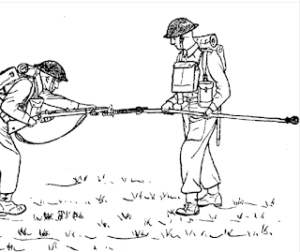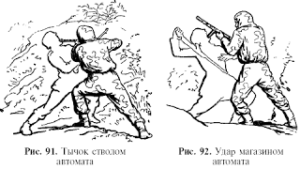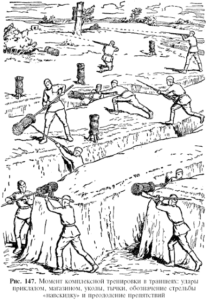Many modern bayonet designs are not particularly useful. I have an SA-80 bayonet that is inferior to my kukri in every respect. It even weighs and costs more. For soldiers who are attempting to lighten their load the bayonet is often one of the first things to be discarded.
Bayonet fighting, however, is still an important skill to become familiar with. Even if you do not have a bayonet or do not have time to fit it bayonet fighting skills can be utilized. Butt strikes and thrusts work the same with an unbayonetted rifle. With the bayonet a thrust from the muzzle can still have a telling effect. The basic principles also apply to long batons or some improvised weapons. For this reason both Crash Combat and Attack, Avoid, Survive have sections on bayonet fighting without a bayonet.
Training in the bayonet was also considered to be a good way to reduce a recruit’s tendency to hesitate and to increase their commitment to an advance.
The second paragraph of a British WW2 manual makes the wise observation:
“2. It is impossible to drill men into becoming good bayonet fighters as it is undesirable for those of different physique to adopt exactly the same style. Words of command will, therefore, be reduced to a minimum, and men will be encouraged to develop a style suitable to their size and build, provided that the methods laid down are followed.
3. By his own example the instructor must instil a spirit of energy and determination in his squad.”
That is good advice, not just for bayonet instruction.
The illustration below is taken from the manual above and shows a useful training aid for bayonet skills. The ring is used as a target to develop accuracy and coordination. The padded end is used for the practice of counters against attacks.


Many armies used similar devices for training. Below is a rather nice Soviet-era illustration of a course to teach soldiers. Rather reminds me of a crazy golf course! In other illustrations parts of the course seem to be used with knives, entrenching tools or unarmed techniques. Elsewhere strikes can be seen being made with the muzzle, drum and stock of the PPSh-41.

